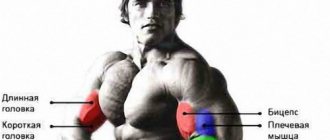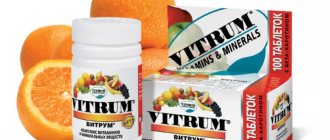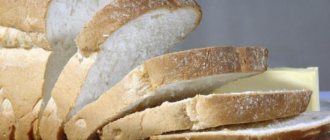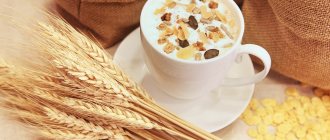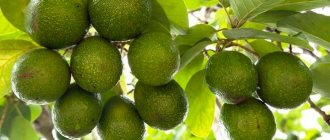Why do they say that bread is harmful and how great is this harm?
The impetus for the confrontation was one of the studies, according to the results of which it was stated that among the people examined, those whose diet was dominated by bread products made from high-grade flour were three times more likely to develop diabetes.
However, we know that bread is baked from cultivated plants such as wheat, rye, oats, buckwheat, barley, millet, corn, rice, amaranth, the grains of which contain almost everything that is vital for the human body.
Bread products contain an impressive number of chemical elements.
Among them: iron, iodine, calcium, potassium, selenium, magnesium, phosphorus, fluorine, nickel, chromium, vanadium, copper, cobalt, chlorine, manganese, boron, zinc, silicon, molybdenum, sulfur.
Each of them plays a specific role and has a biotic effect: building tissue structures; regulation of various physiological, biochemical processes; removal of toxic substances.
Along with them there is:
- A considerable percentage of plant proteins.
- Natural fatty acids Omega-3, Omega-6.
- Carbohydrate. Cellulose. Starch.
- Various amino acids, among them tryptophan, which is responsible for a good mood.
A is a natural antioxidant, responsible for vision, bone formation, and the general normal condition of the body.
E is the well-known “beauty vitamin”. Wrinkles are the least of what can happen if you don’t have it in your diet.
B (B1, B2, B6) - support the nervous system, help fight stress, preserve youth
B5 - prolongs life, accelerates metabolic reactions, helps the production of antibodies.
PP (niacin) - responsible for brain activity and cardiovascular system functions.
H (biotin) - necessary for the regulation of metabolic processes; trouble-free functioning of the stomach and intestines; affects the activity of the nervous and immune systems.
Choline – prevents the destruction of cell membranes.
Description
Bread is made by heat treatment using different types of flour. When digested, the product breaks down into starch rather than glucose. Considered an excellent source of carbohydrates, it helps fill the body with energy. Rich in plant protein, contains Omega-6 fatty acid, vitamins and minerals.
It is customary to distinguish the following varieties:
- Yeast-free bread. For its production, premium flour is used. The peculiarity is reflected in the name - the absence of yeast.
- White (high-grade wheat flour). It contains few nutrients and has a high glycemic index.
- Also, white bread can be made from wholemeal flour or whole grain, these types are more healthy.
- Rye. Rye flour is used for production; the product is very beneficial for digestion.
- Protein. Prepared with the addition of flour, cottage cheese or other protein components.
Bakery products also include loaves and various pastries.
Story
The first varieties of bread appeared many thousands of years ago, gradually the production process evolved, people gained new knowledge and used it for baking. Initially, no yeast or leaven was used; the ingredients included only water and flour, and the flatbreads were baked on heated stones or coals. Gradually, the baking process became more complicated, and the product itself began to be produced on an industrial scale.
Modern options are very diverse, the so-called “living” bread appeared, greens, bran, dried fruits, and herbs began to be added to the product. All this had a positive effect on the beneficial properties and taste characteristics.
Compound
Of course, the composition largely depends on the specific type of product, but a number of general points can be identified. So, what is bread rich in:
- Vitamins (A, E, B, PP).
- Minerals.
- Cellulose.
- Amino acids.
- Carbohydrates.
- Squirrels.
Important! One of the components of black bread is rare selenium, a mineral necessary for the body that can improve resistance to viruses and bacteria.
For weight loss
Many people believe that it is impossible to maintain a slim figure by eating flour products every day. This is a false opinion, since there is bread that is good for weight loss.
Completely avoiding baked goods can have a detrimental effect on your health. Once you are determined to eat right, you should just give up wheat loaves and rolls, because wheat flour loses almost all its beneficial substances after processing.
Losing weight consumers are better off focusing on whole grain bread or products with added bran. Bran will fill the body with energy and satisfy the feeling of hunger for a while. And baked goods made from whole grain flour will become a treasure trove of nutrients and vitamins for the body.
In pursuit of a slim body when consuming baked goods, it is worth remembering a few simple rules:
- consume only a couple of slices a day, and in the first half of the day;
- give preference to products prepared without adding yeast;
- Avoid products based on wheat flour.
White bread: benefits and harms
A loaf made from high-grade wheat flour contains the least amount of nutrients. It has the highest glycemic index and proteins (gluten).
Baking made from wholemeal flour (grades 1 and 2) - includes fiber, a significant amount of vitamins and microelements.
Whole grain - among the above options, it has the lowest glycemic index and the best indicators of saturation with useful components.
Yeast-free - made from different types of flour, which affects the nutritional value.
Protein - a type of whole grain, with the addition of protein products such as eggs, cottage cheese, flax seeds, almonds. Characterized by a large amount of calcium and the presence of Omega-3 fatty acids.
Dietary varieties:
- Wheat with bran - recommended for regulating the activity of the gastrointestinal tract; with atherosclerosis, hypertension.
- Salt-free - for those suffering from diseases that require limiting salt intake.
- Wheat with the addition of wheat germ is a product for people who adhere to a healthy lifestyle; It also helps restore the body after illness.
The nutritional value of bread products depends on what grains they are made from, what stages of processing the grain went through during grinding, and what additives are added.
The most useful is whole grain flour, made by grinding the grain once, without further sifting, while preserving all its components. Fiber improves peristalsis, removes breakdown products and heavy metal salts.
The “highest grade” wheat product is subject to maximum criticism.
Indeed, refined fine flour is a baking product emasculated from all useful substances, having lost, through very aggressive processing of grains, those components (bran and germ) that are valuable as a source of the most important vitamins PP, E, B.
Such a loaf has a particularly rich taste, splendor, aroma, but the most minimal, compared to others, set of useful qualities. It is an easily digestible carbohydrate product, in which mainly proteins and starch remain.
Opponents of “bread eating” accuse him of:
- blood viscosity;
- destruction of intestinal microflora;
- endocrine diseases;
- obesity.
1. In small doses, it is even necessary as a source of energy, a stimulator of dopamine - the hormone of happiness.
Although, when choosing between thick sides and high spirits, it is better to prefer the third: a couple of cubes of dark chocolate, the benefits of which for the human body are increasingly being exaggerated by the media.
Its calorie content turns out to be very useful for athletes - it nourishes and does not overload the stomach.
2. The product breaks down first into starch, and not immediately into glucose. Which means it gives more energy.
3. In addition, a complex of vitamins and minerals is added to this flour during baking.
Wheat from wholemeal flour (first or second grade). More useful because it includes vitamins B1, B2 and PP, E, H. We indicated their main role above. As well as copper, phosphorus, zinc, vanadium, iron, calcium, cobalt.
Products made from wheat flour contain the most protein, which consists of essential amino acids (lysine, methionine).
It is not for nothing that this particular bread product is recommended for children from an early age as a source of vital components, and also, importantly, it is easily digested. It should also be chosen for chronic gastritis and duodenal problems.
About the traditional product
Before delving into the study of this topic, it is worth talking about ordinary store-bought bread. Here's what it contains:
- Refined flour. A product devoid of life. During the refining process, the most useful substances and biologically active parts are removed from cereals. In fact, refined flour is a mucus-forming product that is placed in a lump at the bottom of the stomach.
- Nutritional supplements. Flavors, dyes and preservatives.
- Vegetable oils. When preparing store-bought bread, they use not the highest quality bread, those in which carcinogenic substances are formed when heated.
- Milk and eggs. It is clear that no one will use rustic natural products for mass production.
- Salt. Everyone knows about its dangers. And there is a lot of it in bread. The more salt, the more elastic the dough. The norm is often exceeded, especially if the product is baked from low-quality flour.
- Yeast. Here the list of harmful factors can be long. Yeast negatively affects the intestinal microflora, it “pulls” minerals and vitamins from the human body, lingering in it, acidifies the gastric environment, creates comfortable conditions for parasites, and consumes calcium.
However, not everything is so simple with yeast. If the fungi are destroyed when baking bread, then the body will easily absorb them, and even benefit from amino acids, minerals and B vitamins. But whether yeast dies during baking has been debated for a very long time, so it is impossible to draw clear conclusions here.
Every person who is puzzled by which bread is the lowest-calorie and healthiest should pay attention to them.
Coarsely ground products contain a lot of vitamins and minerals because the grain skins contained in the whole grain flour used in cooking are rich in them.
This bread is also recommended for people who are prone to obesity and want to lose weight! The ratio of proteins, fats and carbohydrates in 100 grams is as follows - 6/1/45. In calories it is about 200-250, no more. In addition, the carbohydrates in wholemeal bread are slow, ensuring the acceleration of material metabolism and the improvement of the gastrointestinal tract. And this is what those losing weight need.
If we talk about varieties, then it is worth buying Darnitsky, Doktorsky, Borodinsky, gray, peeled, rye or “Health” bread. Having picked up the loaf, you need to study the label - it should not contain E-modifiers or flavor enhancers. It is especially good if there is no yeast there. There are such varieties too.
Beneficial features
- You should prefer baked goods made from wholemeal flour. It would be good to choose bran bread, or from whole, or even better from sprouted grains, without yeast - with sourdough.
- It’s even better to bake it yourself, understanding and applying the knowledge gained about the benefits and harms of bread. Know-how: mineral water can be used as a starter.
- “Toast” - convenient for sandwiches. But the composition reveals components that allow you to understand that it is better to refuse it.
- A slice of wheat or rye is better digestible if it is stale or if it is dried.
There is also some debate as to how healthy or harmful bread from a toaster is.
Opponents claim that the device:
- Irradiates the product.
- Acrylamides are formed on the surface of the cracker, which increases the risk of cancer.
Supporters deny the above arguments, arguing that the toaster is not harmful and works like an electric oven.
The choice is yours, but it's important to remember that acrylamide forms when toast dries out. Therefore, those who like toasted bread from a toaster should control the temperature and not allow it to overcook.
Let's consider what the benefits of the product are. First of all, it saturates the body with the energy necessary for normal life and brain functioning. Rich in carbohydrates, which, according to nutritionists, should be the main component of a healthy menu.
Besides:
- Due to its fiber content, the product has a beneficial effect on the functioning of the digestive system.
- It is a natural prevention of cancer, diabetes, obesity.
- Black is rich in phosphorus, calcium, sodium - minerals necessary for beauty and health. Contains up to 30% daily value of iron, zinc and copper.
- Promotes weight loss (with a reasonable approach). Fiber helps cleanse the intestines of toxins, waste and breakdown products, including old ones. In the digestive system of those who refuse the product, there may be several kilograms of fecal stones, which not only lead to excess weight, but also poison the body from the inside.
- Rich in protein, which is a building material, helps to form beautiful muscle relief, and is easily absorbed by the body.
- Helps improve memory.
In addition, the product gives you a feeling of fullness for a long time, helping to get rid of the desire to snack on something harmful between meals.
Rye bread: benefits and harms
This type of bakery products is popular in Russia, the Baltic states, Germany, Finland, and Scandinavian countries.
It has a significant set of micro- and macroelements, essential amino acids, contains a lot of fiber, vitamins H, A, E, PP, and group B, thanks to which it provides invaluable benefits to the human body:
- Speeding up metabolism.
- Reducing the likelihood of oncology (breast cancer); cardiovascular diseases; diabetes mellitus
- By regulating the processes of salt deposition.
- Having a choleretic effect.
- Relieving depression.
- Preventing vitamin deficiency.
- Effectively burning fat.
Previously, we told you how to remove toxins from the body; bread made from rye flour will provide you with invaluable help in this.
It is also used as a mask for oily skin. Gives hair strength, shine, helps get rid of dandruff. It may happen that your health and beauty will depend on its use.
Rye is baked from fermented dough, which gives it a special taste and aroma. Cumin, coriander, malt, and molasses are often added. In terms of calorie content, brown bread differs slightly from white bread.
Speaking about the benefits of black bread, it should be noted that there are harms (contraindications):
- It takes longer to digest and is less absorbed, especially by children’s bodies.
- Irritating to the gastric mucosa. Not recommended for increased acidity, exacerbation of gastritis, peptic ulcer, gastroenteritis, flatulence. However, if the content of gastric juice is low, it will come in handy.
- May cause fermentation and bloating. It is better to eat it dried.
- A significant fiber content reduces the absorption of nutrients.
- The product should be considered gluten intolerant.
Rye flour, like any other, has varying degrees of purity and benefits.
- “Special” is similar to refined.
- “Peel” is similar to second-grade wheat - it contains a larger amount of bran.
- "Wallpaper" - preserves all parts of the grain.
Gray bread is baked from a mixture of rye and wheat flour.
Its benefits, acidity, and other features correspond to the qualities and proportions of the ingredients.
Composition of white flour product
The impetus for the confrontation was one of the studies, according to the results of which it was stated that among the people examined, those whose diet was dominated by bread products made from high-grade flour were three times more likely to develop diabetes.
However, we know that bread is baked from cultivated plants such as wheat, rye, oats, buckwheat, barley, millet, corn, rice, amaranth, the grains of which contain almost everything that is vital for the human body.
https://www.youtube.com/watch?v=ytcreatorsru
Bread products contain an impressive number of chemical elements.
Among them: iron, iodine, calcium, potassium, selenium, magnesium, phosphorus, fluorine, nickel, chromium, vanadium, copper, cobalt, chlorine, manganese, boron, zinc, silicon, molybdenum, sulfur.
Each of them plays a specific role and has a biotic effect: building tissue structures; regulation of various physiological, biochemical processes; removal of toxic substances.
Along with them there is:
- A considerable percentage of plant proteins.
- Natural fatty acids Omega-3, Omega-6.
- Carbohydrate. Cellulose. Starch.
- Various amino acids, among them tryptophan, which is responsible for a good mood.
A is a natural antioxidant, responsible for vision, bone formation, and the general normal condition of the body.
E is the well-known “beauty vitamin”. Wrinkles are the least of what can happen if you don’t have it in your diet.
B (B1, B2, B6) - support the nervous system, help fight stress, preserve youth
B5 - prolongs life, accelerates metabolic reactions, helps the production of antibodies.
PP (niacin) - responsible for brain activity and cardiovascular system functions.
H (biotin) - necessary for the regulation of metabolic processes; trouble-free functioning of the stomach and intestines; affects the activity of the nervous and immune systems.
Choline – prevents the destruction of cell membranes.
A loaf made from high-grade wheat flour contains the least amount of nutrients. It has the highest glycemic index and proteins (gluten).
Baking made from wholemeal flour (grades 1 and 2) - includes fiber, a significant amount of vitamins and microelements.
Whole grain - among the above options, it has the lowest glycemic index and the best indicators of saturation with useful components.
Yeast-free - made from different types of flour, which affects the nutritional value.
Protein - a type of whole grain, with the addition of protein products such as eggs, cottage cheese, flax seeds, almonds. Characterized by a large amount of calcium and the presence of Omega-3 fatty acids.
Dietary varieties:
- Wheat with bran - recommended for regulating the activity of the gastrointestinal tract; with atherosclerosis, hypertension.
- Salt-free - for those suffering from diseases that require limiting salt intake.
- Wheat with the addition of wheat germ is a product for people who adhere to a healthy lifestyle; It also helps restore the body after illness.
The nutritional value of bread products depends on what grains they are made from, what stages of processing the grain went through during grinding, and what additives are added.
The most useful is whole grain flour, made by grinding the grain once, without further sifting, while preserving all its components. Fiber improves peristalsis, removes breakdown products and heavy metal salts.
The “highest grade” wheat product is subject to maximum criticism.
Indeed, refined fine flour is a baking product emasculated from all useful substances, having lost, through very aggressive processing of grains, those components (bran and germ) that are valuable as a source of the most important vitamins PP, E, B.
Such a loaf has a particularly rich taste, splendor, aroma, but the most minimal, compared to others, set of useful qualities. It is an easily digestible carbohydrate product, in which mainly proteins and starch remain.
Opponents of “bread eating” accuse him of:
- blood viscosity;
- destruction of intestinal microflora;
- endocrine diseases;
- obesity.
1. In small doses, it is even necessary as a source of energy, a stimulator of dopamine - the hormone of happiness.
Although, when choosing between thick sides and high spirits, it is better to prefer the third: a couple of cubes of dark chocolate, the benefits of which for the human body are increasingly being exaggerated by the media.
Its calorie content turns out to be very useful for athletes - it nourishes and does not overload the stomach.
2. The product breaks down first into starch, and not immediately into glucose. Which means it gives more energy.
3. In addition, a complex of vitamins and minerals is added to this flour during baking.
Wheat from wholemeal flour (first or second grade). More useful because it includes vitamins B1, B2 and PP, E, H. We indicated their main role above. As well as copper, phosphorus, zinc, vanadium, iron, calcium, cobalt.
https://www.youtube.com/watch?v=https:accounts.google.comServiceLogin
Products made from wheat flour contain the most protein, which consists of essential amino acids (lysine, methionine).
It is not for nothing that this particular bread product is recommended for children from an early age as a source of vital components, and also, importantly, it is easily digested. It should also be chosen for chronic gastritis and duodenal problems.
This type of bakery products is popular in Russia, the Baltic states, Germany, Finland, and Scandinavian countries.
It has a significant set of micro- and macroelements, essential amino acids, contains a lot of fiber, vitamins H, A, E, PP, and group B, thanks to which it provides invaluable benefits to the human body:
- Speeding up metabolism.
- Reducing the likelihood of oncology (breast cancer); cardiovascular diseases; diabetes mellitus
- By regulating the processes of salt deposition.
- Having a choleretic effect.
- Relieving depression.
- Preventing vitamin deficiency.
- Effectively burning fat.
Previously, we told you how to remove toxins from the body; bread made from rye flour will provide you with invaluable help in this.
It is also used as a mask for oily skin. Gives hair strength, shine, helps get rid of dandruff. It may happen that your health and beauty will depend on its use.
Rye is baked from fermented dough, which gives it a special taste and aroma. Cumin, coriander, malt, and molasses are often added. In terms of calorie content, brown bread differs slightly from white bread.
Speaking about the benefits of black bread, it should be noted that there are harms (contraindications):
- It takes longer to digest and is less absorbed, especially by children’s bodies.
- Irritating to the gastric mucosa. Not recommended for increased acidity, exacerbation of gastritis, peptic ulcer, gastroenteritis, flatulence. However, if the content of gastric juice is low, it will come in handy.
- May cause fermentation and bloating. It is better to eat it dried.
- A significant fiber content reduces the absorption of nutrients.
- The product should be considered gluten intolerant.
Rye flour, like any other, has varying degrees of purity and benefits.
- “Special” is similar to refined.
- “Peel” is similar to second-grade wheat - it contains a larger amount of bran.
- "Wallpaper" - preserves all parts of the grain.
Gray bread is baked from a mixture of rye and wheat flour.
Its benefits, acidity, and other features correspond to the qualities and proportions of the ingredients.
The bread product is characterized by the complex effect of bran on human organs and systems:
- Cleansing the intestines.
- Absorbing toxins, allergens.
- Supplying valuable proteins/vitamins, fiber.
- Strengthening the immune system.
- Toning blood vessels. Prevents the formation of plaques and blood clots.
- Normalizing metabolic processes and sugar levels
- Preventing gastrointestinal diseases and excess weight gain.
- Supporting the heart muscle.
- Alleviating bronchopulmonary diseases.
- Improving liver function.
- Having a beneficial effect on the nervous system.
- Stimulating mental work and stress resistance.
- Relieving heaviness in the stomach.
- Improving the condition of the skin, hair, nails.
- Boosting immunity.
- Having a beneficial effect on blood composition.
https://www.youtube.com/watch?v=ytpressru
The product is baked from corn itself or in combination with wheat.
Finely ground flour produces an airy, tender, appetizing loaf, while medium and coarsely ground flour produces a heavier, spongier loaf.
Cornbread is delicious and very healthy!
Based on the above, it is difficult to deny this. A complete diet requires chemical elements and vitamins contained in cereals in the form of bread and cereals.
And here is another important argument in his defense: DAILY MAIL REPORTER (2012) published the findings of the British Nutrition Foundation, arguing that the “demonization” of bread, which is rightfully a vital part of the daily diet, is unjustified.
Scientists have rejected warnings that have been sounded for 20 years, regretting that thanks to them many people are going without vital vitamins and minerals.
In addition, Dr Aine O'Connor, the head of the research, noted that the decline in the consumption of baked goods has not reduced the obesity crisis in Britain (characterized as the worst in Europe). Moreover, despite adherence to low-carbohydrate diets, the process worsens.
O'Connor called out the erroneous belief, inspired by television nutritionists, that illnesses are caused by gluten. She stated that bread products are an important and healthy source of nutrition and called on health authorities to dispel the myths being spread.
The Egyptians, Greeks and Romans improved the recipe for white bread every day and by the beginning of our era, a unified technology for making bread was created. This technology has spread throughout the world and is widely used in the 21st century.
In Greece, white bread was very expensive; only nobles bought it. It became an independent dish and was served separately. Rich hosts treated their guests to freshly baked delicacies and herbal tea.
Over time, the fragrant humpback became available to ordinary people. Baking was treated with respect and medicinal properties were attributed: colds were treated with fresh bread, and the stomach and intestines were treated with stale slices. Eating food without bread was considered a huge sin, for which the gods must punish a person.
In India, local authorities punished thieves, robbers and murderers by not giving them even a piece of bread for a long period of time. The more serious the crime, the longer the culprit remained without sacred food. Not respecting and not honoring bread was one of the most terrible insults of those times.
Possible harm, contraindications
Almost any product has not only beneficial qualities, but also negative effects. So, the harm of bread is as follows:
- High glycemic index. That is why consumption is unacceptable when cutting or on a strict diet.
- The sodium contained in the composition retains fluid in the body.
- The fresh product is poorly digested by the body: rolling into lumps, the crumb is slowly saturated with gastric juice. From this point of view, hot, aromatic baked goods are especially harmful; they can disrupt the functioning of the digestive system.
- If yeast was used in the manufacture of the product, it can negatively affect the functioning of the intestinal microflora.
- Some manufacturers add additives, flavors, and artificial components to the composition. The loaf becomes tasty, but harmful. And alas, they often forget to indicate these substances on the packaging.
- Contains salt, which is also unhealthy for the body.
Bread is a high-calorie product, which is why you should include it in your diet very carefully, especially if you are fighting for a slim figure.
Contraindications:
- individual intolerance;
- colitis;
- gastritis;
- inflammation of the gallbladder or liver;
- stomach ulcer.
Why it is not recommended to eat fresh bread
The fresher and softer the baked goods, the greater the harm to the stomach, because it contains synthetic yeast. Once in the body, they tend to have a depressing effect on the intestinal microflora, disrupting its functioning. A person feels heaviness and discomfort, bitterness in the mouth. The starch contained in fresh bread has harmful properties and irritates the intestinal walls, causing pain and cramping.
We recommend reading: What are the benefits of salted milk mushrooms?
This is why it is harmful to eat fresh bread for people who have problems with the liver, stomach and heart. Before using it, it is better to dry it or eat yesterday’s bread.
Bran bread: benefits and harms
The bread product is characterized by the complex effect of bran on human organs and systems:
- Cleansing the intestines.
- Absorbing toxins, allergens.
- Supplying valuable proteins/vitamins, fiber.
- Strengthening the immune system.
- Toning blood vessels. Prevents the formation of plaques and blood clots.
- Normalizing metabolic processes and sugar levels
- Preventing gastrointestinal diseases and excess weight gain.
- Supporting the heart muscle.
- Alleviating bronchopulmonary diseases.
- Improving liver function.
- Having a beneficial effect on the nervous system.
- Stimulating mental work and stress resistance.
- Relieving heaviness in the stomach.
- Improving the condition of the skin, hair, nails.
- Boosting immunity.
- Having a beneficial effect on blood composition.
Features of different types
Lush, aromatic, just begging to be made into a sandwich with butter, cheese or sausage. This is white wheat bread, very popular in modern kitchens. Let's look at the benefits and harms of white bread for the body. It is rich in carbohydrates, so even a small piece will help you feel a surge of energy.
The yeast included in the composition stimulates the release of calcium from the body. The answer to the question of which bread is healthier - white or rye - is clear: the second option.
Black (rye)
Let's look at the benefits and harms of rye bread.
Pros:
- Rich in fiber.
- Cleanses the body of waste products.
- Contains vitamins and essential amino acids.
Disadvantage: long digestion time, should not be used if the stomach has high acidity or ulcers. Next, the calorie content of a rye product is less than that of a wheat product, but still quite high.
This variety is not so popular, but can be found on store shelves and kitchens. Let's find out which bread is healthier, white or gray.
Pros:
- Can be used for diabetes.
- Solves the problem of constipation.
- Normalizes cholesterol.
- Improves mood.
- A couple of pieces of the product will not harm even the most strict diet.
Minuses:
- If abused, it can cause loss of strength and cause obesity.
- Not recommended during lactation for the first 4 months: it can cause colic in babies.
- Should not be included in the diet for ulcers and gastritis.
The conclusion is obvious - gray bread is much more healthy than white bread.
With bran
Benefit:
- Due to the content of dietary fiber, it gently cleanses the intestines.
- Prevention of constipation.
- Increases hemoglobin.
It is harmful to abuse the product: 1-2 pieces per day is quite enough.
Wholegrain
Let's consider the benefits and harms of choux bread made from whole grain flour with natural leaven.
Therapeutic effect of the product:
- May be included in the menu of people with a disease such as diabetes.
- Gives a long-lasting feeling of fullness.
- Normalizes cholesterol levels.
- Rich in phosphorus and iodine.
With moderate consumption it is not capable of harm (with the exception of the above contraindications).
Yeast-free
Traditionally considered the healthiest variation of the product, it is rich in protein, which is easily absorbed by the body. However, due to the lack of leaven, it does not have an exquisite taste, which is why many people dislike it. In addition, such a product should be discarded if you have ulcers, heartburn, or gastritis.
This is a new product in recent years; the product contains freshly sprouted grains, rich in vitamins and minerals. It enriches the body with useful substances, but should be stored for no more than 48 hours, so when purchasing, pay attention to the production date.
The product does not contain artificial additives, so it is becoming increasingly popular among fans of healthy eating.
For production the following are used:
- coarse rye or wheat flour;
- natural starter cultures (yeast not included)
- honey;
- seeds;
- dried fruits (prunes, raisins);
- dill;
- sun-dried tomatoes.
Crackers
They are slices of bread, dried (both on their own and with the addition of poppy seeds, raisins, sesame seeds).
Benefit:
- Rich in fiber.
- Contains magnesium, potassium, iron, easily digestible carbohydrates.
- Restore strength after operations.
- They do not cause flatulence, so they can become a worthy alternative to bread for older people.
Harm:
- If consumed too much, crackers lead to difficulty in the digestive process.
- The flavorings and flavoring additives that manufacturers use add flavor to the product, but are harmful to the body.
Bread
Useful properties depend on the variety:
- Wheat: rich in fiber, satisfy hunger.
- Buckwheat: satiate, stimulate the gastrointestinal tract, are indicated for those losing weight and diabetics.
- Rye: cleansed of toxins and decay products.
They can cause harm only in case of individual intolerance.
What does modern bread consist of?
It is worth noting that our ancestors rightly loved bread, because it was really good for health.
It was baked independently or in small private bakeries, where they strictly adhered to the traditional recipe and used natural products for baking. The dough was kneaded with unprocessed wheat flour, spring water and home-made sourdough were added. The result was bread rich in vitamins and microelements, which strengthened the immune system and contributed to the normal functioning of the body. The modern food industry is far from traditional bread baking technology. The product is produced on a large scale. Fresh ingredients are not always used to make bread, which is due to saving money spent and increasing income from the sale of the product. Increasing the shelf life of baked goods is achieved by adding chemical preservatives that have a detrimental effect on health.
The bread sold in stores is fundamentally different in composition from traditional loaves. It is prepared from refined flour, vegetable oil, milk, eggs, salt with the addition of yeast and food additives. This composition does not make bread healthy and completely changes its value for maintaining health. Let's look at each ingredient to understand why modern bread can be harmful to the body.
Culinary use
How to choose
Here are some tips:
- Choose a loaf that is undamaged and has a beautiful natural color.
- The burnt crust contains carcinogens; it is better to avoid such a loaf.
- The presence of mold or an unpleasant odor are good reasons to refrain from purchasing.
- Pay attention to the production date and composition (different E are not acceptable).
A high-quality product is stored for 3-4 days, after which it begins to become moldy. If this does not happen, you should not buy such products again, they contain a lot of chemicals.
How to use
It is better to eat potatoes and meat without bread, but with broths and seafood, rye slices will come in handy. It is better to eat the product in the first half of the day, 1-2 pieces per day is enough. It is important to chew the product thoroughly. You should avoid fatty treats (sandwich with mayonnaise, butter, sausage).
Important! Fresh bread is inferior in beneficial properties to yesterday's bread.
How to store
For storage, it is better to use special bread bins, after cutting the loaf into slices and drying them. Once a week, the bread bin should be washed and crumbs removed.
Advice! If you place several slices of apple in the bread bin, the product will go stale much more slowly.
Tips for use
- To prevent bread products from causing harm to your health, eat them in reasonable quantities (no more than 300 grams per day).
- Remember: white bread, as well as products such as buns and loaves, contain the least beneficial elements. It is recommended to replace it with rye, Borodino, whole grain or bran.
- Bread products should not be consumed together with fats. If you like sandwiches with butter or mayonnaise, you will have to give them up.
- To get the maximum benefit from the product, eat homemade bread. The recipe is very simple: you need flour, water, yeast, as well as salt, sugar, spices (optional). Mix the ingredients and leave the dough to rise, then bake in the oven at 200 degrees.
- A special bread maker will help make the cooking process easier.
Yeast-free bread
It can be made from various cereals; its benefits and possible harm depend on the quality of flour milling, as well as vitamins and microelements contained in the cereal.
Gluten-free. They are purchased by people who prefer an ecologically healthy diet, as well as those suffering from allergies, ciliacia (gluten intolerance), and diabetes. They are baked in various variations: from a mixture of buckwheat, rice, corn flour, as well as from seeds (without flour and yeast).
Bread products with the addition of iodine, which the thyroid gland loves so much, by going here you can find out its functions and significance for all human systems and organs.
You can find many great homemade recipes on the Internet. For example, ginger bread with fruit. Airy, aromatic, baked from a mixture of whole grain, wheat, rye flour, with the addition of cinnamon, ground ginger root, the benefits of which for the human body have been famous for a long time and everywhere.
So, are there any benefits from bread products for the human body?
Based on the above, it is difficult to deny this. A complete diet requires chemical elements and vitamins contained in cereals in the form of bread and cereals.
And here is another important argument in his defense: DAILY MAIL REPORTER (2012) published the findings of the British Nutrition Foundation, arguing that the “demonization” of bread, which is rightfully a vital part of the daily diet, is unjustified.
Scientists have rejected warnings that have been sounded for 20 years, regretting that thanks to them many people are going without vital vitamins and minerals.
In addition, Dr Aine O'Connor, the head of the research, noted that the decline in the consumption of baked goods has not reduced the obesity crisis in Britain (characterized as the worst in Europe). Moreover, despite adherence to low-carbohydrate diets, the process worsens.
O'Connor called out the erroneous belief, inspired by television nutritionists, that illnesses are caused by gluten. She stated that bread products are an important and healthy source of nutrition and called on health authorities to dispel the myths being spread.
Production: yeast, improvers
It is no secret that the conditions for growing grain crops and the technological processes for making bakery products have changed greatly, and the product itself has changed accordingly.
Grain crops are grown in fields fed with various chemicals, including pesticides. Wheat is often genetically modified to increase its gluten content.
Manufacturers' tricks aimed at reducing the cost of the final product neutralize its most valuable properties.
The use of pesticides occurs when growing not only grains, but many other crops. For example, watermelon: the benefits and harms of which for the human body sometimes outweigh each other. You should also choose it carefully, with knowledge of the matter. Among genetically modified plants/vegetables we can name corn, potatoes, soybeans, paprika, sugar beets, and others.
Genetically modified microorganisms are used in the production of dairy products, including yoghurts and cheeses.
Yeast
Bread with yeast has been baked since the times of Ancient Egypt. The fermentation process determined the taste, splendor, and aromatic qualities of baked goods.
Opponents of bread products are concerned about the presence of baker's yeast in modern technologies, which are supposedly thermophilic (surviving at high temperatures). And when they enter the human body, they settle there, multiply, and cause damage:
- Disturbing the natural microflora.
- Suppressing immune forces.
- Giving rise to all sorts of ailments.
- Acidifying the environment, which is favorable for the settlement of parasites.
- Poisoning the “carrier” with waste products.
- Consuming substances needed by the body.
- By increasing cell permeability, which gives carte blanche to various pathogens, including viruses. Provoking herpes rashes on the lips.
- In addition, yeast, like other fungi, are capable of producing antibiotics, which, among other things, reduces the effectiveness of the use of antibacterial drugs in the treatment of diseases. The topic of Antibiotics and Superbugs has been discussed in detail previously.
Do yeast and their spores die when baking bread products (oven temperature is 200-220°, and the crumb in the loaf is 98°C)? To date, the survivability attributed to them is still only a theory, a hypothesis. There is not a single conclusive experiment, discovery, or fact.
In addition, our body is already populated by a mass of fungi, bacteria, and other microorganisms.
It is also argued that yeast is harmful because it is produced from raw materials, most of which are not food grade. Namely: heavy metals, chemical components.
Pesticides, heavy metals, and toxic products are present in a wide variety of plant materials grown near industrial enterprises; water, soil.
Lead and cadmium were found in chocolate from seventeen of the largest well-known brands.
Heavy metals are also found in legumes, sugar, dairy products, oils, vegetables, fruits, berries, meat, poultry, and fish.
In addition, it makes sense to take into account the following:
- In addition to bread yeast, we also get milk, wine, and beer yeast from our food.
- All of them are rich in vitamins, amino acids, minerals, and improve the absorption of many nutritional components.
- The miraculous effects of yeast masks for the face and hair should not be overlooked.
Improvers
The task of bakery product manufacturers is to sell their products. To increase shelf life, suppress bacteria, fungi, mold, improve the appearance and taste of the product, various additives are used, which simultaneously harm the health of consumers:
- Preservatives.
- Food colorings.
- Flavors are often unnatural.
To be fair, it should be said that the same substances can be observed in confectionery, meat, and other food products.
When purchasing low-quality but cheap grain, it is enriched with anti-caking agents, antioxidants, and other improvers.
Flour is bleached with aggressive substances.
For comparison, let's look at sugar; olives that are turned into olives.
A modern bakery product contains a large list of various components labeled “E”.
“Eshki” are found in almost all current products: from fish and canned meat to confectionery.
Vegetable oils are used, firstly, not the most healthy, and secondly, when heated, they form carcinogenic substances.
Each of us can recall a lot of examples of heating oils in the preparation of lunches and dinners for the family, as well as used in the manufacture of some purchased provisions.
Unfortunately, almost all products created using modern technologies contain modified fats and palm oil.
Gluten is a sticky protein.
There is especially a lot of it in a wheat loaf. But it is also present in rye, oats, and barley.
Used in the manufacture of:
- Products of meat processing plants.
- Yoghurt, ice cream, chocolate, syrups.
- Beer, whiskey, vodka.
- Medicines, vitamins in capsules.
- Mayonnaise, ketchup.
- Crab sticks.
- Pasta products.
- Semi-finished products.
- Cakes, cookies, waffles, sweets.
- Lavash.
- Chips.
The substance is used as an adhesive, increases elasticity, or as a thickener.
Knowing about the possible pitfalls, you should make a more careful choice for your table.
What kind of bread can you eat while breastfeeding?
Young mothers should know that grain products are necessary for the best recovery after childbirth and replenishment of the body with biologically valuable substances.
But you should be able to make the right choice, wisely limit portions, and be sure to take into account that breast milk should:
- have an optimal composition;
- do not cause unwanted reactions in the baby.
Skip the freshly baked white. It can contribute to weight gain and reduce the value of your milk, since the content of beneficial components is low.
But yesterday's bread or dried bread (in small portions) activates digestion, as does bran bread made from rye flour.
The latter is not suitable for gastritis, peptic ulcers, intestinal microflora disorders, and flatulence. In these cases, it is better to stick to a diet for gastritis of the stomach, eating only what is allowed.
Black bread made from rye and barley flour is recommended if there are no problems with digestion. Will help you lose weight, saturate you with macro- and microelements. It should not contain artificial flavors or dough improvers (this can cause allergies in infants).
The best option is multi-grain products, bread with bran.
Biobread
This is the most popular product among people leading a healthy lifestyle and opponents of food additives. This is the healthiest bread for humans. It contains no leavening agents, preservatives, or flavor enhancers. This product is usually prepared from rye flour. Either from whole grain, peeled or wallpaper. Coarse flour can also be used.
The most important thing is that bio bread contains no yeast. To make the product “rise” during baking, natural starters are added to the dough.
It also often contains natural honey, nuts, cumin, seeds, prunes, poppy seeds, raisins, dill, pumpkin and even sun-dried tomatoes. In general, there are additives, but they are useful because they are natural.
Thus, biobread becomes a product that fully corresponds to the brand of functional food products. It appeared on the shelves recently, but has already gained popularity.
At what age can you give bread to a child?
To enrich with nutrients and improve growth, you can offer your baby white wheat crackers from 7 months, and white bread (day-old or slightly dried) from 8 months. Starting with the smallest dose, increasing to 1/3 piece by 1 year.
Rye, whole grain - do not give until 3 years. The baby's enzyme system is still defective.
Sourdough is easier to digest than yeast.
Bread with bran is not recommended for children. Only over 4-5 years old, overweight and as prescribed by a specialist.

